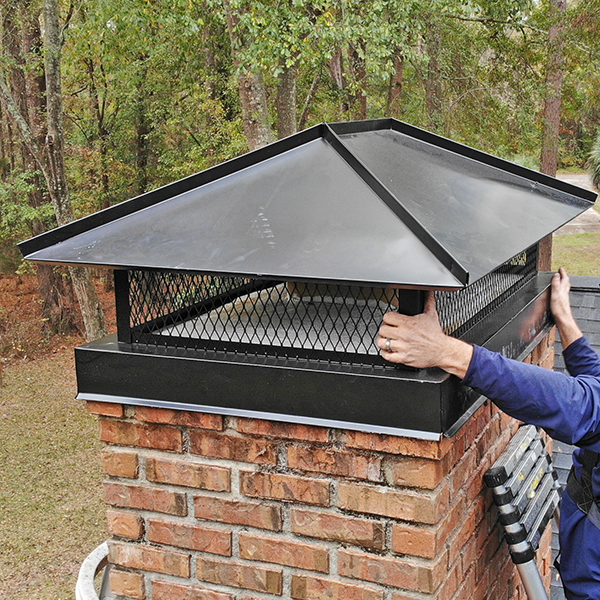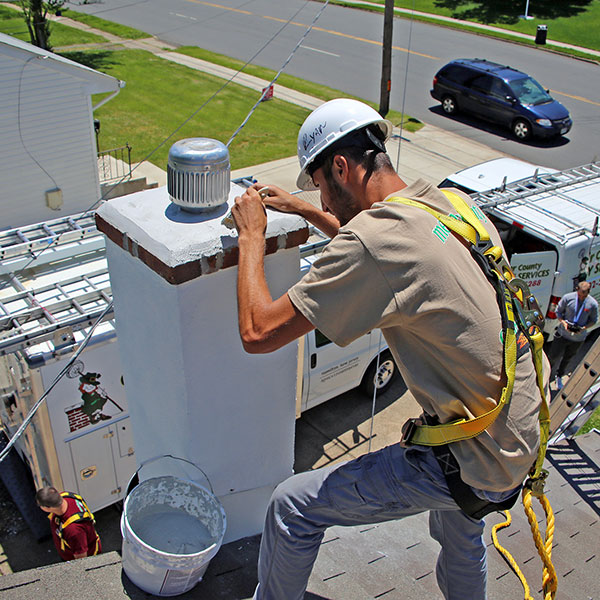The Pros Guide to a Leaky Chimney
A leaky chimney can occur at any time and is often a sign of a potential problem. With so many possible entry points, it can be challenging to pinpoint the source of the leak. Time is of the essence when diagnosing and repairing chimney leaks to prevent extensive water damage. We’ll explore the five common causes that pros look for in a leaky chimney.
 Chimney Cap is Missing
Chimney Cap is Missing
One of the most common causes of a leaky chimney is also one of the simplest to fix. When the chimney cap is damaged or missing, rainwater will fall into the exposed flue and leak inside the chimney, often showing up as small puddles in the fireplace. The moisture can soak the interior masonry and damage the bricks and mortar and other internal components. The humidity inside the flue can also promote bacteria and fungus development, including mold, which can negatively impact indoor air quality. Also, leaves, twigs, and even small animals can block the flue opening that can send smoke and fumes pouring out of your fireplace instead of the chimney. Our certified chimney techs will install a chimney cap for your size chimney to prevent chimney leaks.
Bricks and Mortar Have Gaps
Masonry chimneys are porous, and the continuous freezing and thawing that commonly occurs during the winter can eventually damage bricks and mortar, leaving gaps in the joints. The moisture seeps through the cracks and can cause extensive water damage inside the chimney. Masonry damage also decreases the heating efficiency of your fireplace and increases the risk of fire. The damage can also expand to other chimney sections that can destabilize the structure resulting in a partial or complete collapse. Our certified chimney professionals are experts in tuckpointing and masonry repair and can restore your chimney so that it will look and perform as good as new.
 Chimney Crown is Cracking
Chimney Crown is Cracking
The cement crown that tops the masonry chimney can eventually develop surface cracks that allow water to leak in the fireplace and soak through the flue liner and damage the flue tiles. When spotted early, typically through an annual chimney inspection, chimney crown cracks can be easily repaired without rebuilding the chimney crown.
Chimney Flashing is Loose
The chimney flashing is sheet metal installed where the chimney meets the roof that forms an airtight seal, so water doesn’t seep through the gaps. The flashing can become loose, rust, or corrode due to normal wear and tear and extreme weather conditions that can cause water damage to the attic, roof deck, ceiling, and walls near the fireplace. Since improperly installed flashing can also cause a leaky chimney, flashing installation and repairs should always be performed by Chimney Safety Institute of America (CSIA) technicians, like the professionals at Mercer County Chimney Services.
Chimney Liner Is the Wrong Size
Many homeowners are converting from wood-burning to gas fireplaces and have an incorrectly sized liner for the flue. An unlined chimney or installing the wrong flue liner in a gas fireplace can cause condensation to develop in the chimney that can damage the masonry and cause water stains to appear on the walls around the fireplace. Always use a certified chimney professional when converting fuel types and get a chimney inspection after the work is complete.


